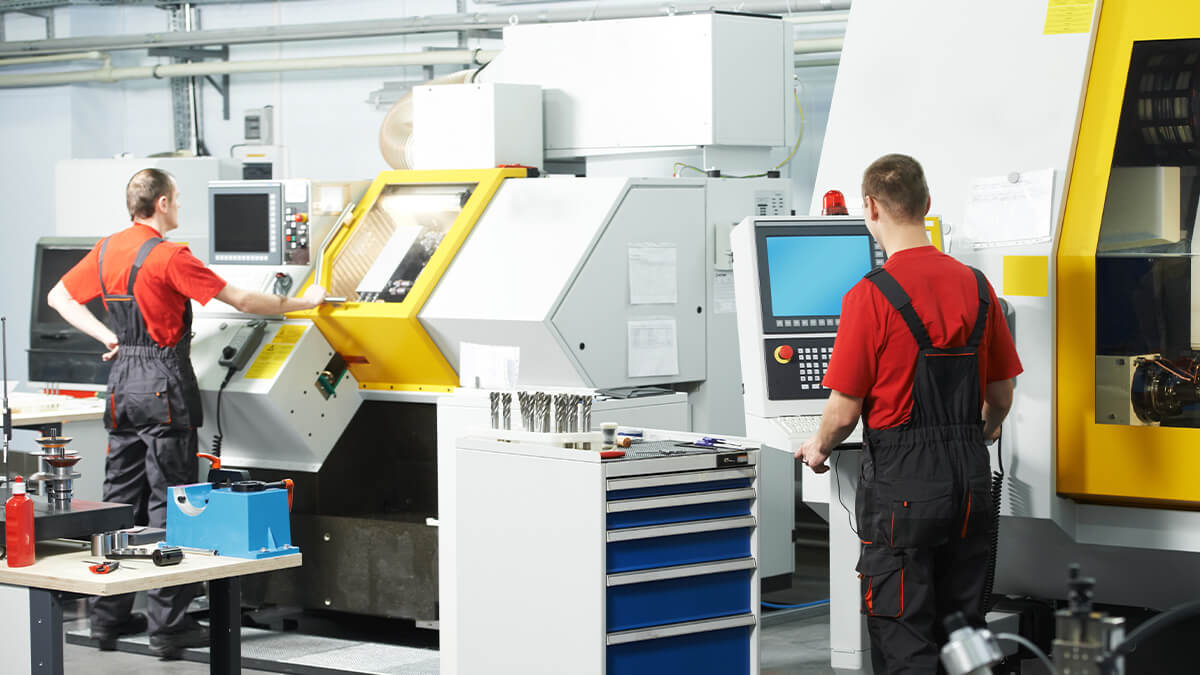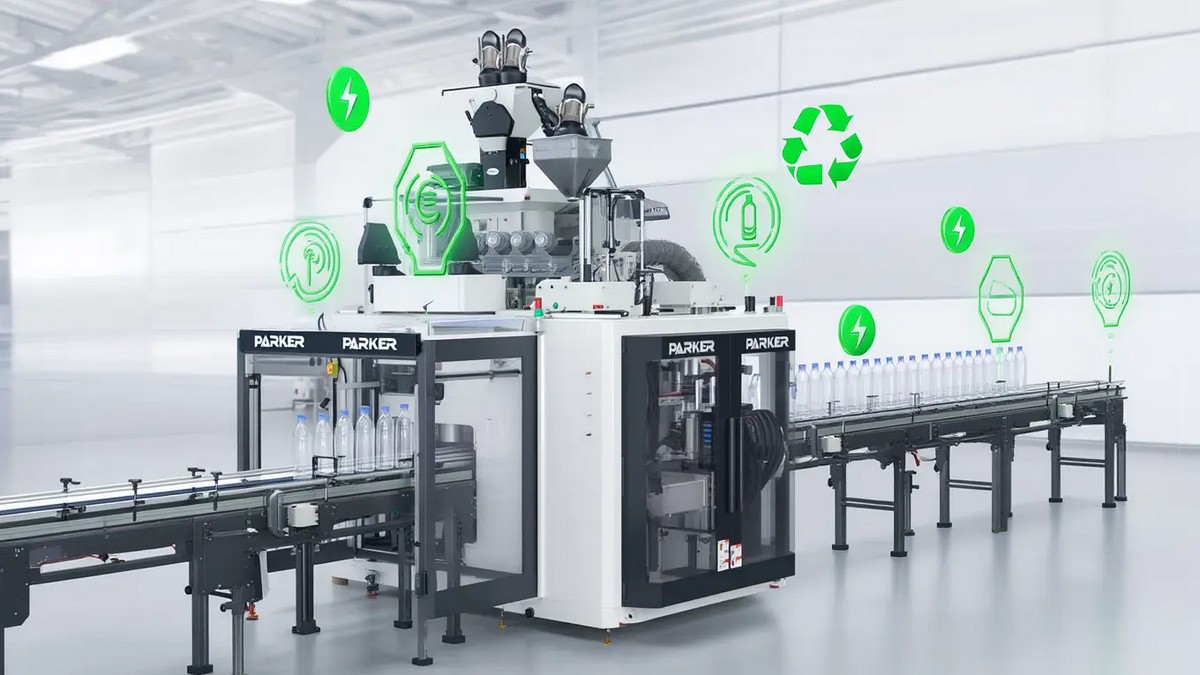According to the International Economic Forecasting Agency, the global economic growth of this year (2020) is almost the same as the growth rate of 2019. However, the impact of the covid-19 may affect the economy of various countries in the short term and even impact the industrial supply chain. The current situation of the international economy and explain the possible influence factors of the recent development of the North American market, including the US-Canada-Mexico Agreement, the US-Japan Agreement, the US-China trade war, etc., and then the development of the supply chain changes explore the outlook for the North American market.
Global economic prospects and prospects for the machinery industry
Judging from the estimates of various international economic forecasting agencies, the International Monetary Fund (IMF) is the most optimistic about this year’s global economic forecast, predicting that the global economy will grow by 3.3%, but the United States’ economic growth forecast for 2020 is 2.0 %, a slight decline from the 2.3% economic growth rate in 2019. On the whole, the international economic forecasts announced in January of this year hold a "growth" attitude towards the economy throughout the year. However, since late January, the outbreak of a large-scale outbreak of the new coronavirus in China has not only impacted manufacturing in China. The production situation of the industry is also affected by the successive occurrence of community infections in many countries, which has caused the production situation of various industries and the inventory situation of the supply chain to be affected.
According to the assessment of global trade by international forecasting agencies, it was originally estimated that global trade could grow significantly. For example, the IMF estimated that the global trade growth rate in 2020 would be 2.9%, and the Economist (EIU) predicted that it would be 2.3%, both significantly better than in 2019. The reason for this is that international organizations believe that the signing of the US-China trade agreement will significantly revive global trade.
In the machinery industry, since 2019, due to the impact of the US-China trade war, the export of Chinese manufacturing to the US has been affected. Although China can still support its foreign trade through the European and Southeast Asian markets, due to the transfer of orders from foreign manufacturers the effect naturally has an impact on the domestic demand for machinery and equipment in Mainland China. Taiwan’s machinery industry is most exported to mainland China, and of course, it has also been affected. Therefore, after the US-China trade war eased, mainland China’s export restrictions to the US were reduced, which in turn led to an increase in mainland China’s production demand, which is conducive to the export of my country’s machinery industry to mainland China.
Due to the impact of the US-China trade war, to diversify the market, Taiwanese manufacturers have increased their investment in Taiwan, shifting orders back to Taiwan for production, and then expanding production lines, increasing the demand for machinery and equipment. Although the US and China have signed a trade agreement, the US The problem of the industrial structure of Taiwan has not been solved. Therefore, the situation of Taiwanese businessmen increasing their investment in Taiwan will continue to increase, which is conducive to the development of the machinery industry. Therefore, the prospects of the machinery industry in 2020 should be optimistic.
The Impact of U.S. Bilateral Trade Policy on Market Development
The biggest factor affecting the U.S. and global trade in 2019 is nothing more than the U.S.-China trade war. U.S. President Trump’s tariff trade war on China not only affected China’s exports to the U.S., but the policy also triggered mainland China to increase tariffs. The counter-attack, especially against agriculture, has led to poor sales of exporters in most states of the United States to mainland China, that is because tariffs have suppressed exports of products such as wheat, whiskey, ginseng, and natural gas to mainland China.
According to statistics from the U.S. Department of Commerce, total U.S. merchandise exports to mainland China fell by 11% in 2019, to about $107 billion. Among them, the hardest-hit states are Texas, Florida, and Alabama. The total sales of these states have plummeted by more than 25%. Of course, there are unaffected states, such as North Carolina. North Carolina’s exports to mainland China grew by 40% in 2019, reaching US$3.25 billion, mainly driven by drug sales, and the state’s tobacco exports to mainland China have hardly declined.
In short, the impact of the US-China trade war on the United States itself is not small, and it has also contributed to the signing of the first phase of the US-China trade agreement. However, mainland China’s commitment to the agreement is to increase purchases as a short-term approach to balance the U.S.-China trade balance. However, there are still issues of technology and industrial development competition between the U.S. and China, which need to be further resolved.
To ease the competition between China's technology and industrial development, the United States prohibits the export of American technology to China through trade and investment-related laws, and also seeks support from other countries to reduce the purchase of equipment made in China. Recently, it has proposed prohibiting foreign manufacturers. Use American equipment to produce products required by mainland China. This will further indirectly affect the demand for production equipment required by various industries.
In addition to the US-China trade agreement, under the leadership of President Trump, the United States has promoted the signing of trade agreements based on bilateral negotiations. The recently completed signings also include the US-Japan Agreement, the US-Canada-Mexico Agreement, etc., and those still under negotiation include Trade negotiations between the United States and the European Union, trade negotiations with India, etc. Among them, although the U.S.-Japan Agreement and U.S.-Canada-Mexico Agreement focus on balancing U.S. foreign trade, they mostly start from the procurement side. For example, they require Japan to increase purchases of U.S. agricultural products or increase tariff quotas, and expand U.S. auto exports to the Japanese market; in the U.S.-Canada-Mexico agreement in the middle, it is to increase the minimum wage level to stipulate the source of procurement of automobile parts and components, and to increase the content of regional output value of automobiles.
The United States hopes to enhance the export opportunities of American products through the regulations of the above-mentioned agreements and to increase employment opportunities for the American people. However, for the development of the US economy, the most important issue should still be the global industrial structure. "The distribution of the supply chain" is still the most fundamental issue of whether American companies are willing to return to the United States to produce, create jobs, and create economic output.
Changes in the global supply chain will affect the U.S. market layout
First, the US-China trade war-imposed tariffs on each other, not only affecting the trade between the US and China, but also the international supply chain. In particular, it will have an impact and influence on countries with close industrial supply chains in the United States and China. For example, under the system of the global industrial division of labor, if the United States or China imports intermediate goods with higher tariffs, it will increase the cumulative tariffs in the production process of the industry, which will affect the cost of the global industrial chain and make the global value chain appear Reorganization and adjustment. According to the differences in their roles in the global value chain, manufacturers in various countries will implement layout strategies based on the highest principle of "dispersion", including methods such as decentralizing customers, decentralizing production bases, and decentralizing procurement sources to reduce the risk of the US-China trade war. influences.
Therefore, under the influence of the prolonged U.S.-China trade war, manufacturers have even considered diverting according to the market, moving the production energy of mainland China out, and reducing tariff costs by strengthening production lines in Southeast Asia or Taiwan, and keeping them in mainland China the production line of the company is mainly based on the Chinese mainland market. This type of trade is close to the global layout under the "short-chain revolution."
Second, according to McKinsey's report "Globalization in Change: The Future of Trade and Value Chains" in April 2019, it pointed out that "value chains are becoming more and more regional rather than global." Except for Mainland China, other developing countries have undergone structural changes. For example, in the field of textiles and clothing, production networks spanning multiple stages are being integrated into individual countries such as Vietnam, Malaysia, Indonesia, India, and Bangladesh, and even make "domestic manufacturing" (such as: "Made in India", "Made in America"), “Made in Indonesia”, “Made in Russia”, etc.) policies have risen one after another, which will result in a reshuffle of the supply chain.
Third, in recent years, mainland China has gradually got rid of the pure industrial foundry model and turned to a self-developed and self-supplied industrial supply chain. As its production technology level has matured, the local supply chain in mainland China has gradually developed and become "Red Supply Chain". However, in the face of the impact of the US-China trade war, the various policies adopted by the United States to restrict technology transfer, product procurement, and investment will prompt the corporate world to divert manufacturing and form a supply chain dominated by the United States and mainland China. A system leading to the dichotomy of the industrial supply chain.
Based on the above analysis, global economic growth in 2020 is still expected. Although the new coronavirus epidemic has cast a shadow on the prospects of global economic development, once the epidemic slows down, it will inevitably detonate a large amount of demand for industries and products at all levels, and manufacturers are bound to need it. Expansion of production in response to global demand is expected to drive global demand for machinery and equipment. At this stage of the epidemic, if the Taiwan epidemic continues to be properly controlled, it will become the target of international manufacturers to transfer orders. Therefore, no matter from the short-term or medium-to-long term perspective, the Taiwan machinery industry should have a better development this year.
Analysis of the Cooperation and Competition of the Machinery Industry in the United States, China, and Taiwan
-
The US machinery industry has a clear market segmentation from Taiwan, while China has a highly competitive relationship with Taiwan
As for the comparison of the machinery industry in the United States, China, and Taiwan, if we take the application fields of machine tools to illustrate, the export scale of machine tools in the United States is not high, mainly domestic demand, and high-end technology fields such as aerospace are the main market. In this area, the ink is not deep, so there is no direct competition or substitution relationship with American manufacturers. However, the application fields of Taiwanese machine tool manufacturers and Chinese manufacturers are highly overlapped, and traditional manufacturing is the main market, and they generally produce general-purpose types. The degree of competition and substitution of aircraft types is quite obvious. Generally speaking, the US machinery industry mainly produces high-end, heavy industrial equipment, while Taiwan mainly produces civilian and general-purpose equipment. Therefore, the US machinery industry has a clear market separation from Taiwan, but China The machinery industry has a highly competitive relationship with Taiwan, so the competition and cooperation of the machinery industry on both sides of the strait has become the focus of market observation.
-
The unequal scale of investment in the machinery industry across the Taiwan Strait has caused China to engage in price wars and threaten Taiwan
The rapid rise of China's economy has led to the vigorous development of various industries, and China has already become a global manufacturing country, with strong demand for machinery and equipment, and some machinery products are listed as regulated, making it impossible for China to purchase sensitive high-end machinery and equipment products. In order to strengthen its own national strength, China's "Eleventh Five-Year Plan" has listed the machinery industry as a key development industry, which has driven the rapid growth of investment in China's machinery industry. In 2013, its investment amount exceeded 2 trillion yuan, even in 2015. Since the growth of its investment scale has slowed down significantly, its investment still reached more than 2.5 trillion yuan from 2015 to 2017. Although the National Bureau of Statistics of China no longer announces the amount of fixed capital formation for various industries in the manufacturing industry from 2018, based on its published annual growth rate, the amount of fixed capital formation for China's machinery industry has continued to rise since 2018 and 2019. Looking back at the investment situation in Taiwan’s machinery industry, the compound annual growth rate of investment in Taiwan’s machinery industry from 2010 to 2017 was 3.54%, with little change. This is mainly due to the weakening of Taiwan’s machinery industry output growth momentum in recent years and the fact that domestic machinery companies are actively moving overseas. (Including China) investment. In addition, Taiwan’s domestic investment environment is not good, and industry players are not willing to invest in the country. Therefore, although the investment scale of Taiwan’s machinery industry from 2015 to 2017 reached about 30 billion Taiwan dollars, it has been affected by the US-China trade war since 2018. Its investment scale has expanded to 37.2 billion yuan, but it is still far from China.
Due to the huge investment scale of China's machinery industry, its annual new capacity has increased significantly, but it has also caused serious overcapacity. Since China's machinery industry is still dominated by low- and medium-end products, it is in the situation of overcapacity and high product homogeneity. Under the circumstance, low-price competition has become one of the main means for China's machinery industry to reduce production capacity, and the cross-strait machinery industry has long become a highly competitive relationship. Affected by the price war adopted by China, Taiwan's machinery industry faces major challenges.
-
The Chinese market attracts major international companies like magnetism to invest, while Taiwan lacks incentives to attract foreign investors to Taiwan to invest in the machinery industry
In terms of the attractiveness of the cross-strait investment environment to foreign businessmen, China is the world’s factory and brings huge business opportunities to the machinery industry. In addition, China has made the average import tariff rate of machinery products significantly higher than other countries’ imports of machinery products in order to support the local machinery industry. Therefore, international manufacturers will be levied high tariffs on machinery products shipped from other places to China. In addition, after China’s accession to the ASEAN Free Trade Agreement in 2010, it enjoys tariff concessions for trade in the ASEAN market. China has become a springboard for companies from other countries to enter the ASEAN market. Therefore, the huge business opportunities in China’s own market, high import tariffs, and tariff reductions in the ASEAN market have all driven international machinery and equipment manufacturers to invest in China and set up factories. Although the scale of foreign investment in China’s machinery industry was relatively large in 2014~2017 Decrease before 2013, the annual investment scale is still as high as 5 billion US dollars. In 2018, facing the impact of the US-China trade war, China's machinery industry is the worst-hit industry under the trade war. However, the scale of foreign investment in China is even greater the rise to 7.291 billion US dollars (see Figure 3 for details) shows that the Chinese market itself has a huge demand for machinery and equipment, and it still attracts major international machinery and equipment manufacturers to invest.
With regard to Taiwan, in addition to the electronics and semiconductor equipment industry in Taiwan’s machinery market, its own market demand is small, it is difficult to attract major international machinery and equipment manufacturers coveting the Taiwan market to invest in Taiwan, and it is not easy for Taiwan to sign contracts with other countries due to political factors. To establish free trade agreements, it is difficult to enjoy the export competitive advantage generated by tariff reductions. In addition, Taiwan’s five domestic shortages (land, water, electricity, talent, and labor) are often criticized by companies, especially Electricity and land have made foreign investment in Taiwan even more deterred. Therefore, apart from the large sum of funds that were remitted in 2016 by the Dutch semiconductor equipment company ASML's acquisition of domestic electronic equipment company Hanweike, the scale of foreign investment in Taiwan's machinery industry is not high. However, with the stalemate of the US-China trade war, the amount of foreign-invested enterprises in Taiwan to invest in the machinery industry has risen sharply. According to the information released by the investment review committee, the amount of foreign investment in Taiwan’s machinery industry from January to September 2019 reached US$755 million. Japanese companies have the largest investment in Taiwan, accounting for 94.31%.
As international companies invest locally, in addition to bringing capital and creating jobs, they will also introduce management methods, production technologies, and R&D energy. The clustering effect produced by more investors will be more obvious, which will drive the overall local industry Increased competitiveness. Therefore, when China became the world's factory, its market attracted international companies to invest like magnetism, and China's machinery industry showed a rapid development trend. On the other hand, Taiwan's machinery industry only relies on investment from domestic players, and is not easy to attract international companies. The competitiveness of Taiwan’s machinery industry will increase relatively slowly, but this phenomenon has changed after the US-China trade war. Taiwan should adopt a number of channels to attract overseas companies to invest in Taiwan.
-
The export scale of China's machinery industry has grown substantially, putting Taiwan's machinery industry under strong threats
In terms of the comparison of machinery exports across the Taiwan Strait, Taiwan’s machinery industry’s export value was higher than China’s before 1999, but since 2000, China’s machinery industry’s export value has surpassed Taiwan, and the gap is widening. Affected by the global financial tsunami in 2009 and the slowdown in global economic growth from 2015 to 2016, its export value has shown a downward trend. Since 2000, the export value of China's machinery industry has grown rapidly, and since 2005, it has increased to more than 10 billion US dollars per year. In 2018, its export value has risen to 211.5 billion U.S. dollars; however, Taiwan’s machinery industry is only showing a slow-growth trend. In 2018, Taiwan’s machinery industry export value was 24.6 billion U.S. dollars, which is as high as 186.9 billion U.S. dollars behind China. In terms of compound annual growth rate, the compound annual growth rate of China’s machinery export value from 2000 to 2018 was 17.55%, while that of Taiwan was only 4.65%. If compared with the global financial tsunami (2010), China’s export value from 2010 to 2018 The annual compound growth rate of machinery export value was 7.67%. Although the growth momentum was significantly reduced, it was mainly due to the relatively high base period. Taiwan’s machinery industry export value compounded annual growth rate of only 4.15%. There is a clear gap.
In addition, in terms of the performance of the cross-strait machinery industry in the United States and the ASEAN market, since 2000, the value of China's machinery exports to the United States and the ASEAN has shown a rapid upward trend, and the gap with Taiwan has been widening. In terms of compound annual growth rates, the compound annual growth rates of China’s machinery exports to the United States and the ASEAN market from 2000 to 2018 were 17.11% and 18.89% respectively, while Taiwan’s only 3.85% and 4.37%; in addition, China joined The ASEAN Free Trade Association enjoys tariff concessions. Therefore, the compound annual growth rate of China’s machinery exports to ASEAN from 2010 to 2017 is still 9.94%, while Taiwan’s only 3.77%, indicating that China enjoys tariff preferences. Taiwan’s machinery industry faces greater challenges in the ASEAN market. In addition to the Chinese market, the United States is the second-largest exporter of Taiwan’s machinery industry, and the ASEAN is also a relatively important export market for Taiwan’s machinery industry. Therefore, China’s machinery industry has been heavily exported, allowing Taiwan’s machinery industry to compete in the United States and ASEAN. The strong threat to the market has caused the growth of Taiwan's machinery industry to be suppressed.
Analysis of the US-China trade war
-
U.S. sanctions against China
- Based on the reform of the US economic and trade policy to "America First", the US initiated the 301 investigations and imposed trade sanctions on China
After President Trump took office, his economic and trade policies were based on "America First". The United States changed its past efforts to promote "free trade" and began to use anti-dumping duties, balance taxes, 201 defense clauses, 232 national security clauses, and 301 clauses to strengthen trade tools. The U.S. industry is competitive and used to deal with the issue of trade imbalances with China. Among them, on the issue of U.S.-China trade issues, President Trump signed a memorandum on August 14, 2017, instructing the U.S. Trade Representative (USTR) to discuss China’s intellectual property rights, innovation, and Whether the laws, policies, and measures or behaviors of science and technology harm the interests of the United States. The 301 investigations were launched and the results of the investigation were announced on March 22, 2018. It is believed that China is restricting the proportion of foreign shareholding and forcing the transfer of US business technology; secondly, non-market The price requires US technology authorization; the third is policy support for land companies to invest in the US to obtain cutting-edge technology; the fourth is the Internet theft of US business secrets. Based on this, the USTR has successively announced the product list and imposed additional tariffs on Chinese products, which will be implemented on July 6, 2018 (see Table 1 for details). No one knows when the US-China trade war will end, but it has already had a negative impact on the global economy. In particular, manufacturing investment has turned conservative and wait-and-see, and the purchase of machinery and equipment is delayed, which is detrimental to the prosperity of global machinery and equipment. which performed.
- The United States actively suppressed China's machinery industry, allowing Taiwan's machinery industry to obtain transfer order benefits from the United States, but it still has to compete with major manufacturers in advanced countries
From the perspective of the first wave of taxation items, the United States imposed a total of 818 import tariffs on Chinese goods. However, in order to avoid the increase in the price of imported goods and cause the American people to lose blood, only 8 items are levied on consumer goods and 17 items are imposed on other goods. There are 793 items of intermediate goods and capital goods that are not directly related to the general public. In the first wave of taxation lists, there are as many as 412 items of machinery and equipment products, accounting for 50.37% of all items in the first wave, mainly because high-end equipment is one of the important industries for China’s manufacturing in 2025, but it is also actively suppressed by the United States. Therefore, China’s machinery industry has become the hardest-hit industry in the first wave of taxation lists in the US-China trade war. Although in the second wave of taxation lists, the United States only levied 31 items for Chinese machinery products, the third wave of taxation items increased by 175 items, and the fourth wave reached 126 items.
As far as Taiwan is concerned, due to the high degree of competition in the machinery industry on both sides of the strait, China used to compete at low prices to seize the market, posing a serious threat to Taiwan’s machinery industry. With the start of the US-China trade war, the US imposed a 25% tariff on imported Chinese goods, which is quite beneficial to Taiwan’s machinery industry, and the benefits of transferring orders from the US will also be more obvious. In terms of product content, the number of machinery products imported from Taiwan by the United States in 2017 was mainly concentrated in the first wave of taxation lists, accounting for 50.3% of the total amount of machinery products imported from Taiwan by the United States, followed by the third wave of lists, the first three batches The list has accounted for 88.9% of the total US imports of machinery products from Taiwan, making Taiwan’s machinery industry’s transfer orders from the US continue to benefit, but it still has to compete with major manufacturers in advanced countries.
-
China's sanctions on the United States
- China only began to include mechanical products in the third batch of lists, reflecting that China still has scruples in countering mechanical products under the adjustment of its manufacturing structure
Under the U.S. trade sanctions, China followed suit. However, China did not impose sanctions on U.S. machinery products in the first wave and the second wave of taxation lists. Replacing the old with new ones is also carried out, but the high-end equipment required depends on imports, so mechanical products only appear in the third wave. According to China’s import data in 2017, China’s imports of machinery products amounted to US$128.9 billion, while imports from the United States amounted to US$15.6 billion, accounting for 12%; the third wave of related machinery products totaled 680 items, accounting for the total machinery Import items accounted for 74%, and imports from the United States amounted to 8.5 billion US dollars, accounting for 9%. Among them, many machine tool products have been included in the list. It is also worth mentioning that even after the third wave of the list, China has not yet seen China impose import tariffs on American electronics and semiconductor-related machinery and equipment. This shows that China has been actively developing the electronics industry in recent years, while the United States is mainly producing semiconductor equipment. The country, caused China to be hesitant when it countered.
On the whole, in consideration of its economic development, China has scrupulous about imposing tariffs on American machinery products. It was not included in the third wave of the list. When the US machinery industry was levied high tariffs, and Taiwan had many machinery products Included in the ECFA early collection list, the difference in tariff rates between the two in the Chinese market is more obvious, which will naturally benefit Taiwan’s machinery and equipment manufacturing industry; however, in the Chinese market, Taiwan still has to face Japan, Germany, Italy, Switzerland and even South Korea In addition to the threat of competition from other countries, China has also lowered the overall average import tariff rate of China in response to the impact of the US-China trade war, resulting in a decline in the tariff rate advantage enjoyed by Taiwan’s products on the ECFA Early Collection List. Therefore, Taiwan cannot obtain huge benefits after the loss of US orders, especially Taiwan’s machinery products are mainly used in the manufacturing industry needed by the general public. Taiwan’s competitiveness in terms of equipment and top precision equipment required for heavy industry is quite weak, and this part will be shared by advanced countries.
- The US-China trade war is fierce, but the impact on the machinery and equipment manufacturing industries of both sides is within the control
Since the United States and China have very different sanctions on machinery products from each other, the United States first suppresses the rapid development of Made in China 2025, and capital and intermediate wealth are not directly related to inflation, which is deeply felt by the people. Therefore, Chinese machinery products have become the United States to initiate trade. The major industries affected by the first wave of taxation lists in the war, Taiwan has benefited quite obviously. Later, as sanctions on the new list begin, Taiwan will also benefit. For Taiwanese businessmen in China, if the machinery products produced by Taiwanese businessmen are sold to the United States, they will be more severely affected. However, Taiwanese businessmen who invest and set up factories in China are still focused on supplying the needs of the local Chinese market. In addition, according to statistics released by the Statistics Department of Taiwan’s Ministry of Economic Affairs, in 2015, Taiwan’s machinery industry accounted for 20.42% of overseas production orders, and then showed a downward trend, reaching only 14.57% from January to September 2019. Among them, orders from the United States and sold to the United States account for a lower proportion of overseas production. Therefore, facing the US-China trade war, as long as the production capacity shipped from China to the United States is transferred back to domestic production, the overall impact on Taiwanese businessmen in China will not be big affected.
Secondly, as far as the China list is concerned, China’s additional tariffs on the United States began to be included in the third list of mechanical products, and products such as semiconductor equipment and panel equipment have not been included, but the third wave of mechanical products has included 680 items. , Accounting for 74% of China’s overall imports of machinery products, which also shows that China has begun to counter-measure US machinery products on a large scale, and some Taiwan machinery products are included in the ECFA early collection list, and tariff preferences have given China a chance to increase Taiwan’s machinery and equipment manufacturing industry is expected to benefit from Taiwan’s purchases, but because Taiwan’s mechanical products are still different in technology from the United States, they cannot fully obtain the transfer order effect. Taiwan, Japan, South Korea, and Europe share the order probability higher.
On the whole, in terms of the direct effects of the transfer order effect produced by the trade war, Taiwan's machinery and equipment manufacturing industry can benefit from the loss of orders between the United States and China in each other's markets. For the United States, the total export value of US machinery products reached US$175.8 billion in 2017, and the proportion of exports to China was only 6.54%. Moreover, China has a number of high-end equipment (especially semiconductor equipment) that still needs to rely on US supplies. Therefore, even if China levies import tariffs on American machinery products, the impact on the overall industry of the US machinery and equipment manufacturing industry is still within 5%. For China, the United States is the largest exporter of Chinese machinery products. In 2017, its proportion was as high as 18.15%. However, China's machinery products are still mainly sold domestically. In 2017, the main business income of China's machinery and equipment manufacturing industry reached 8.36 trillion yuan, while exports the amount reached US$189.5 billion. Based on the average exchange rate of RMB in 2017, the export value accounted for 15.32% of the main business income; the export value to the United States accounted for only 2.78% of the main business income. Therefore, despite the fierce U.S.-China trade war, the impact on both sides' machinery and equipment manufacturing industries is within control.
-
Impact on Taiwan's machinery industry
Although the start of the US-China trade war has caused the two sides to lose orders in each other’s markets, which is not good for both parties, and Taiwan is expected to obtain a transfer order effect, but this is only a direct effect of the transfer order effect, and an indirect effect thereafter (overflow) the effect is extremely detrimental to Taiwan’s machinery industry. First of all, the United States and China are the world’s top two economies, and they play a pivotal role in the performance of the global economy. The trade war between the two major economies has begun, and there seems to be no sign of stopping in a short period of time. Under this situation, the global economy Will face more and greater risks of uncertainty, and the investment willingness of the manufacturing industry will adopt a conservative and wait-and-see attitude; in addition, imposing import tariffs will also increase the import cost of goods, which will lead to cost-driven inflation and the consumption power of the people. Decline, international trade will shrink significantly. Therefore, consumption decline, investment reduction, and trade contraction will inevitably impact the global economic growth momentum in the future, and the machinery industry is highly correlated with global economic growth, especially with the prosperity and development of the manufacturing industry. Commodity trade is even more closely related. According to the analysis of global and national trade data published by the United Nations, the correlation coefficient between the value of global merchandise exports and the export value of the global machinery industry (SITC 721~749) from 1995 to 2017 is as high as 0.9965, and the correlation coefficient between the total global merchandise export value and the export value of Taiwan’s machinery industry is as high as 0.9432. With such a high positive correlation, when global economic growth is affected, Taiwan’s machinery industry will inevitably be affected. In addition, Taiwan’s beneficial direct effect is based on the increase in transfer orders obtained while the overall demand remains unchanged, but in fact, if the global economy is affected, the overall demand will decrease, which will affect the overall performance of Taiwan’s machinery industry. This is why major domestic machinery and equipment manufacturers are so worried after the start of the US-China trade war.
Secondly, the U.S.-China trade war, China is relatively weak, will also have a certain degree of impact on the Chinese economy, especially the threat to China’s manufacturing industry is more obvious, so China’s manufacturing industry investment will also turn conservative, thereby reducing the need for machinery. The demand for imports of products, coupled with China’s previous import substitution policy to support local machinery manufacturers, has reduced the purchase of machinery and equipment. However, when Trump took office as President of the United States, he continued to provoke the trade deficit between the United States and China. Contrary to the previous import substitution policy, it has been changed to expand import procurement to reduce the scale of its trade surplus. As a bargaining chip for trade negotiations between the two countries, Taiwan's machinery industry has also benefited. Therefore, since 2017, Taiwan's machinery industry's orders from China have grown significantly; Now that the U.S.-China trade war has started, China’s policy of expanding import purchases may also turn to import substitution again. In addition, Chinese machinery manufacturers that used to dominate the U.S. market may turn to sales in China under this trade war. Competition in the market has become more intense, which is extremely detrimental to the export of Taiwan's machinery products to the China market.
Third, the Chinese machinery industry lost part of the American market. In addition to returning to China for sales, it may also turn to other markets. The ASEAN market is also likely to replace China as a global manufacturing plant due to its rapid economic development. The demand is huge, and after China joined the ASEAN Free Trade Agreement, it enjoys the advantage of tariff reduction in the ASEAN market, and ASEAN is also one of the important markets for Taiwan’s machinery industry, and more machinery products will enter the ASEAN market in China. , Taiwan’s competition in the ASEAN market will become more intense, while in other emerging markets and even Europe, Taiwan will also face tougher competition threats from Chinese machinery manufacturers.
However, the trade war between the two major powers still has another favorable factor for Taiwan’s machinery industry, that is, the return of Taiwanese businessmen is expected to increase. In particular, the use of China as a production base and sales to the US market will bear the brunt, which will further accelerate Taiwanese businessmen’s return to Taiwan to invest. The relocation of its production lines will surely expand the demand for machinery and equipment, and the government is also investing in the manufacturing industry to return to Taiwan. If Taiwanese companies are willing to introduce smart manufacturing, purchase smart machinery and equipment, and return to Taiwan to upgrade and transform, the government will spend three years. The reduction rate of 3% or the current year’s reduction rate of 5% is the alternative investment discount. Therefore, the domestic demand for Taiwan’s industry is expected to increase, which will help the industry’s domestic sales performance. However, Taiwan’s domestic enterprises are worried about five the problem of lack depends on how the government solves it.
On the whole, the impact of the US-China trade war on Taiwan’s machinery industry is divided into direct and indirect effects. In terms of direct effects, Taiwan’s machinery industry will benefit relatively, but in terms of indirect effects, apart from favoring Taiwan businessmen’s return to Taiwan in addition to the investment, other aspects are unfavorable; however, the direct effects will gradually diminish over time. However, as the US-China trade war continues to stalemate, the unfavorable factors of indirect effects will become more apparent.
The US-China trade war will have a resetting effect on the global industrial chain. It is still unknown whether this will be good or bad for Taiwan’s machinery industry
In addition to the direct purpose of imposing tariff sanctions on Chinese goods, the United States launched a trade war against China. Its implicit purpose is to use the deterrent effect of tariffs to force foreign capital to withdraw from the Chinese market. In September 2018, the American Chamber of Commerce in China and the American Chamber of Commerce in Shanghai announced a survey of more than 430 American companies in China. In the first and second batch lists (a total of 50 billion US dollars), 63.6% of the respondents said US tariffs are affected, while 62.5% of respondents said they were affected by Chinese tariffs. At the same time, respondents generally believed that the third batch of lists would have a clear negative impact on them. On September 20, 2018, the Ministry of Commerce of China announced in a routine press conference that the US$200 billion of goods in the third batch of lists cover many products such as electromechanical, light industry, and textiles. Among the affected enterprises, foreign enterprises accounted for 50%. %. Affected by this, the situation of foreign capital withdrawing from China will be more obvious. Even if Japanese companies have accumulated years of overseas investment experience and have long-established cross-border complex supply chains, they will still be strongly impacted by the US-China trade war, and considering the short-term It is difficult to end. Japanese companies have begun to respond by changing production areas and other measures. Therefore, the US-China trade war will also have a resetting effect on the global industrial chain, and other emerging markets outside of China are expected to become new global manufacturing production bases. However, whether this phenomenon is good or bad for Taiwan’s machinery industry is still unclear, because the top three export countries of Taiwan’s machinery industry are China, the United States, and Japan, which account for more than 50% of the total, indicating that Taiwan’s machinery industry export market has excessive concentration. It also implies that the layout and development of Chinese machinery manufacturers in other markets are not as active as in markets such as China and the United States. When foreign capital is withdrawn from China and transferred to other markets, it remains to be seen whether Taiwanese machinery manufacturers can win orders. Therefore, Taiwan's machinery and equipment manufacturing industry should actively explore other markets. In addition to diversifying risks, it can also calmly respond to the arrival of the global industrial chain reset.
Participation, market analysis
-
Output value analysis
The industry is deeply influenced by the growth of the global economy. In particular, China is the largest export market for Taiwan’s machinery industry. It has been affected by the US-China trade war. China’s manufacturing industry has been hit and the demand for machinery and equipment has weakened. The loss of orders in the US market and the conversion of products to domestic sales and the emergence of import substitution effects are also detrimental to the development of the Taiwan machinery industry in the Chinese market. In the domestic market, due to the US-China trade war, the return of Taiwanese businessmen has increased significantly, and the return of the electronics industry to Taiwan to expand investment is more obvious. Therefore, since 2019, Taiwan’s manufacturing industry has seen an increase in machinery and equipment expenditures, and the electronics industry’s investment growth has been the most powerful Strong; however, the equipment required by the electronics industry relies mainly on imports, while the traditional manufacturing industry is relatively conservative in investment willingness, leading to a shrinking trend in domestic sales in this industry. Therefore, under the influence of the reduction in the scale of procurement from the Chinese market and the conservative investment in traditional domestic manufacturing, the production value of Taiwan’s machinery industry from January to August 2019 only reached 432.1 billion yuan, a 9.34% decline compared with the same period in 2018, of which metal processing was used. The machine tool manufacturing industry (machine tool) has experienced the most serious decline, mainly due to the sluggish global machinery industry’s demand for machine tools, and the United States has planned to impose import tariffs on European and Japanese cars. The issue of the trade war has spread to the automotive industry. In addition, China’s auto market has been disrupted by the US-China trade war, which has reduced consumers’ willingness to buy cars. Since 2018, China has significantly adjusted tariffs and lowered its import tariff rate from 25% to 15%, which has an impact on China’s auto production performance. Therefore, in the global automotive industry's weak economy, the demand for machine tools has declined, resulting in its production value reaching 81 billion yuan, with an annual reduction rate of 15.81%. The special machinery and equipment manufacturing industry, due to the reduction in China’s import demand and the conservative investment in the domestic traditional manufacturing industry, has brought its production value to 151.1 billion yuan, an annual reduction rate of 8.78%, while the general machinery and equipment manufacturing industry has declined due to the overall machinery and equipment boom. , Reducing the demand for related components, resulting in its production value only reached 200 billion yuan, a decline of 6.87% compared with the same period in 2018. As the United States imposed additional tariff rates on China’s US$200 billion list of goods from May 10, 2019, the tariff rate was increased from 10% to 25%. The remaining US$300 billion lists were released on September 1, 2019, and December 15, 2019. Japan imposes an additional 15% tariff rate in two stages, and China has taken corresponding countermeasures. The US-China trade war has become the biggest uncertain factor in global economic development. This interference factor has caused conservative investment in manufacturing and adopts a wait-and-see attitude; in addition, since 2019, Taiwan’s machinery industry’s export orders have still shown a significant decline. The performance of export sales is also not optimistic. Therefore, under the conservative investment of enterprises and shrinking export orders, it is estimated that the production value of Taiwan's machinery industry will still decline significantly in the fourth quarter of 2019, and the annual output value reduction rate will reach about 10%.
-
Analysis of Import and Export Market
In terms of imports, although Taiwan’s domestic traditional manufacturing investment is relatively conservative, it has benefited from the continuous expansion of equipment and upgrading of manufacturing processes by high-tech companies. Among them, the extreme ultraviolet (EUV) equipment purchased by TSMC was affected by the complicated production process and manufacturing process in 2018. The yield problem has not been effectively improved, resulting in delays in shipments. However, since 2019, its yield rate has rebounded significantly and deliveries have continued. Coupled with the return of investment from Taiwanese companies, the import value of Taiwan’s machinery industry reached NTD from January to August 2019 651.9 billion yuan, a substantial increase of 17.93% over the same period in 2018. In terms of exports, although the transfer order effect from the U.S. market is obvious, the amount of Taiwan’s machinery exports to the U.S. has grown substantially since 2019, and purchases from Japan have also increased; however, the U.S.-China trade war has caused a shift in Chinese manufacturing investment. At the same time, China’s machinery industry is shifting from export to domestic sales to produce import substitution, which has led to a sharp decline in China’s demand for Taiwan’s machinery and equipment. In addition, the depreciation of the New Taiwan dollar exchange rate is not as obvious as the RMB and the Korean won, which weakens export competitiveness. From January to August, the export value of Taiwan's machinery industry reached 428.1 billion yuan, with an annual reduction rate of 5.14%.
In terms of major exporting countries, the top five exporting countries of Taiwan's machinery industry from January to August 2019 were China (excluding Hong Kong and Macau), the United States, Japan, Vietnam, and Germany, accounting for a total of 63.30%. As China has been hit by the US-China trade war, its manufacturing investment has turned conservative, coupled with the import substitution of machinery and equipment, resulting in Taiwan's machinery exports to China only amounting to 125.8 billion yuan, a significant decline of 14.45% from the same period in 2018. Except for China, the value of exports to other major countries has shown an upward trend. Among them, the US market, due to the transfer order effect, has driven Taiwan's machinery industry exports to the US to reach 84.9 billion yuan, a significant increase of 12.47% from the same period in 2018. As Vietnam benefited from the US-China trade war, many companies will move outside of China’s production lines to Vietnam, which will drive a significant increase in investment in Vietnam, which in turn will increase the demand for machinery and equipment, making Taiwan’s machinery exports to Vietnam amount to 19.1 billion yuan. The growth rate was 6.38%, and exports to Japan and Germany also grew by 3.59% and 1.46% respectively.
Responding to challenges
- Facing the escalating US-China trade conflict, Taiwan's machinery industry may adopt multiple investment plans, but they must pay attention to the subsequent evolution of the trade war and exchange rate trends
Recently, the government has announced that many Taiwanese companies intend to return to Taiwan to invest in order to avoid the impact of the US-China trade war, including a small number of machinery companies. It is also evaluating returning to Taiwan to set up production lines and considering the increasing labor costs in China. 4 It will catch up with Taiwan in ~5 years, so it plans to return to Taiwan to set up factories with a higher degree of automated production lines. However, Taiwan’s machinery industry has multiple complex factors to consider when making investment plans. First, although China is facing rising wage costs and the impact of the US-China trade war, the Chinese market’s demand for machinery and equipment is still huge, and Taiwan Investment in the machinery industry in China is still dominated by China’s own market. Therefore, even if the United States announced in April 2018 that it would impose an additional import tariff rate of 25% on Chinese goods, the investment review committee approved Taiwan’s machinery and equipment industry to invest in China from April to August 2018. Compared with the same period in 2017, the amount still increased by 16.49%. From July to August 2018, the United States implemented the first and second batch of lists. The amount of investment from Taiwan’s machinery industry to China still increased by 7.79% compared with the same period in 2017. Karma still has considerable appeal. Although the amount of investment from Taiwan’s machinery industry to China has declined significantly since 2019, it is still the preferred market for overseas investment. The US-China trade war has indeed allowed some Taiwanese businessmen to return to invest in Taiwan. Except for the manufacturers announced by the government, according to the survey results of the Taiwan Economics Institute, the investment intentions of machinery manufacturers in the past have all been China as their first choice. However, the results of this survey are based on Taiwan. the Lord. Therefore, facing the US-China trade war, the investment of Taiwanese machinery manufacturers may adopt a situation where the two plans of continuing to invest in China and returning to Taiwan are parallel.
However, when it comes to investing in Taiwan, the industry faces five shortcomings first. Secondly, Taiwan’s machinery industry is mainly for export. Exchange rate fluctuations often become a disturbing factor in business operations and even profitability. In addition to the early ECFA signing between the two sides Out of the list, Taiwan’s trade with major countries cannot enjoy tariff concessions. These are the problems that Taiwanese businessmen face after returning to Taiwan, and they rely on the government’s full assistance.
On the whole, the US-China trade war has had a long-term impact on global economic development. Taiwanese machinery manufacturers must be cautious. At this stage, in addition to continuing to invest in China and return to Taiwan, they must also pay attention to the trade war. The subsequent evolution and exchange rate trends.
- The government should strengthen import and export management, and strictly prevent China from dumping a large number of products to Taiwan, or using Taiwan as a relay station to sell to the United States
In addition to responding to the long-term global structural changes brought about by the US-China trade war, Taiwan machinery manufacturers should also pay attention to the various response measures taken by China in the short term. According to data released by the Customs of the Republic of China, Taiwan has since 2018 The overall performance of the machinery industry (excluding electronic equipment) imports is weak, but the amount of imports from China has shown a strong growth trend. If the purpose is to dump a large number of goods into Taiwan, it will pose a threat to Taiwan’s machinery industry in the domestic market. As a relay station, it was first shipped to Taiwan and then sold to the United States under the name of Taiwan. Taiwan may suffer retaliation from the United States in the future. Therefore, in the face of the loss of the advantage of Chinese products sold to the United States, its practices may include a large number of dumping to Taiwan, using Taiwan as a relay station or expanding sales in other markets with low-price strategies, which will adversely affect Taiwan’s machinery industry. The government should set up a task force to study and judge this development trend, respond to it, and strengthen import and export management, including proactive visits to traders and request for settlement; in addition, Taiwan’s domestic machinery industry should also be more proactive in upgrading the industry and increasing added value with China’s machinery industry As a market segment, it reduces the threat of competition from China's machinery industry.







.jpg)
.jpg)

.jpg)

點-m-90454917_m.jpg)

